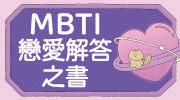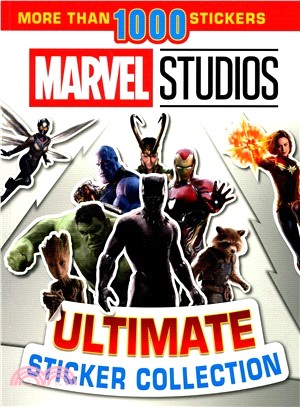BLUETOOTH 1.1: CONNECT WITHOUT CABLES 2/E
商品資訊
ISBN13:9780130661067
出版社:PRENTICE-HALL;INC.
作者:JENNIFER BRAY; CHARLES F. STURMAN
出版日:2002/01/01
裝訂:平裝
商品簡介
目次
(NOTE: Each chapter concludes with a Summary.).
Foreword to the Second Edition.
Foreword to the First Edition.
Preface to the Second Edition.
Preface to the First Edition.
Acknowledgments.
Introduction.
1. Overview.
Bluetooths Origins. The Bluetooth SIG. Aims. The Protocol Stack. Security. Applications and Profiles. Using Bluetooth. Management. Test and Qualification. Bluetooth in Context.
PROTOCOL STACK PART 1—THE BLUETOOTH MODULE.
2. Antennas.
Radiation Pattern. Gains and Losses. Types of Antennas. Ceramic Antennas. On-chip Antennas. Antenna Placement.
3. Radio.
Introduction. Frequency Hopping. Modulation. Symbol Timing. Power Emission and Control. Radio Performance Parameters. Simple RF Architecture. RF System Timing. Blue RF.
4. Baseband.
Introduction. Bluetooth Device Address. Masters, Slaves, and Piconets. System Timing. Physical Links: SCO and ACL. Bluetooth Packet Structure. Packet Types and Packet Construction. Logical Channels. Channel Coding and Bitstream Processing. Timebase Synchronisation and Receive Correlation. Frequency Hopping.
5. The Link Controller.
Introduction. Link Control Protocol. Link Controller States. Link Controller Operation. Piconet Operation. Scatternet Operation. Master / Slave Role Switching. Low-Power Operation. Baseband / Link Controller Architectural Overview.
6. Audio.
Introduction. Audio Transports in the Protocol Stack. Quality and Bandwidth. SCO Links. Audio CODECs. Audio Subsystem. Audio Data Formats and HCI. Implementation.
7. The Link Manager.
LMP Protocol Data Units (PDUs). The Link Management Channel. Link Setup. LMP Link Shutdown. Role Change. Control of Multi-Slot Packets. Security. Low-Power Modes. Power Control. Quality of Service. Information Messages. Supported Features. LMP Version. Name Request. Test Mode.
8. The Host Controller Interface.
HCI Packet Types. The HCI Transport Layer. Flow Control. Configuring Modules. Inquiring: Discovering Other Bluetooth Devices. Inquiry Scan: Becoming Discoverable. Paging: Initiating Connections. Page Scan: Receiving Connections. Sending and Receiving Data. Switching Roles. Power Control.
PROTOCOL STACK PART 2—THE BLUETOOTH HOST.
9. Logical Link Control and Adaptation Protocol.
Multiplexing Using Channels. L2CAP Signalling. Establishing a Connection. Configuring a Connection. Transferring Data. Disconnecting and Timeouts. Connectionless Data Channels. Enabling and Disabling Incoming Connectionless Traffic. Handling Groups. Echo and Ping. Get Information. L2CAP State Machine. Implementation-Dependent Issues.
10. RFCOMM.
Serial Ports and UARTs. Types of RFCOMM Devices. RFCOMM Frame Types. Connecting and Disconnecting. Structure of RFCOMM Frames. Multiplexer Frames. Service Records.
11. The Service Discovery Protocol.
SDP Client/Server Model. The SDP Database. Browsing SDP Records. Universally Unique Identifiers (UUIDs). SDP Messages. Service Discovery Profile.
12. The Wireless Application Protocol.
The WAP Forum. The WAP Stack. PPP Links. WAP Clients and Servers. Suspend and Resume. Service Discovery. WAP Interoperability. Using WAP.
13. OBEX and IrDA.
OBEX in the Bluetooth Stack. Object Model. Session Protocol.
14. Telephony Control Protocol.
TCS Signalling. Call Establishment Signalling. Call Clearing Signalling. DTMF Signalling. Wireless User Group (WUG) Signalling. Connectionless Signalling. TCS Call States.
PROTOCOL STACK PART 3—CROSS LAYER FUNCTIONS.
15. Encryption and Security.
Key Generation and the Encryption Engine. Secret Keys and PINs. Pairing and Bonding. Starting Encryption. Security Modes. Security Architecture.
16. Low-Power Operation.
Controlling Low-Power Modes. Hold Mode. Sniff Mode. Park Mode. Low-Power Oscillator.
17. Quality of Service.
Requesting QOS. QOS Violations. Flushing and Delays. Link Supervision. Broadcast Channel Reliability. Data Rates and Packet Types.
18. Managing Bluetooth Devices.
Link Configuration and Management. Device Manager Architecture. Security Management. Integrating Applications. Accounting Management. Capacity. User Interface Design.
APPLICATIONS—THE BLUETOOTH PROFILES.
19. Foundation Profiles.
Structure of Profiles. The Generic Access Profile. The Serial Port Profile. Dial Up Networking. FAX Profile. Headset Profile. LAN Access Point Profile. Generic Object Exchange Profile. Object Push Profile. File Transfer. Synchronisation Profile. Intercom Profile. The Cordless Telephony Profile. Benefits of Profiles.
20. Draft Post Foundation Profiles.
The Human Interface Device Profile. The Hands-Free Profile. The Basic Imaging Profile. The Basic Printing Profile. The Hard Copy Cable Replacement Profile.
21. Personal Area Networking.
The PAN Profile. Bluetooth Network Encapsulation Profile.
22. ESDP for UPnP.
Universal Plug and Play Device Architecture. L2CAP Based Solutions. IP Based Solutions.
TEST AND QUALIFICATION.
23. Test Mode.
Activating Test Mode. Controlling Test Mode. Radio Transmitter Test. Loopback Test.
24. Qualification and Type Approval.
Bluetooth Qualification. Bluetooth Interoperability Testing. Regulatory Type Approval.
BLUETOOTH IN CONTEXT.
25. Implementation.
Introduction. System Partitioning. Hardware Integration Options. Bluetooth as an IP Core. ASIC Prototyping and FPGAs. Making the Right Design Choices. Radio Implementation.
26. Related Standards and Technologies.
Introduction. What Are the Requirements? Infrared Data Association (IrDA). Digital Enhanced Cordless Telecommunications (DECT). IEEE 802.11. The HomeRF™ Working Group (HRFWG). IEEE 802.15 and the Wireless Personal Area Network (WPAN). HIPERLAN. MMAC. The Future. Useful Web Addresses.
27. The Bluetooth Market.
Introduction. Market Pull and Technology Push. Market Segments. Success in the Marketplace. Enabling Technologies and Components. Consumer Products. The Bluetooth Brand.
28. Future Developments.
Working Groups and New Bluetooth Profiles. Profile Working Groups. Future Bluetooth Core Specifications.
APPENDIXBLUETOOTH 1.1 UPDATES.
主題書展
更多書展今日66折
您曾經瀏覽過的商品
購物須知
為了保護您的權益,「三民網路書店」提供會員七日商品鑑賞期(收到商品為起始日)。
若要辦理退貨,請在商品鑑賞期內寄回,且商品必須是全新狀態與完整包裝(商品、附件、發票、隨貨贈品等)否則恕不接受退貨。
























